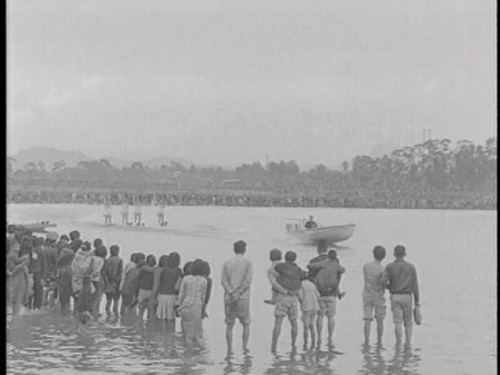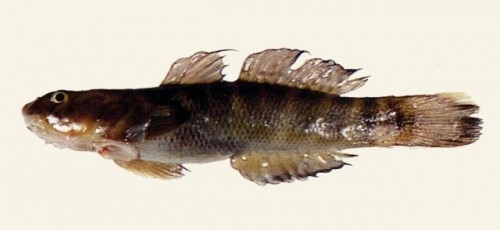TELDAP Collections
| An Expanse of Emerald Green in the Metropolis: Bitan Then and Now |
|
Situated in northern Xindian, Bitan — which means “emerald water” in Mandarin — acquired its appellation from a local resident, Cai Yulin (1892-1990). On its northbound journey, the Bitan leg of the Xindian River covers a vast expanse of deep pools filled with emerald water. Bitan has long been a noted tourist attraction. It was celebrated as one of the “Eight Views and Twelve Resorts of Taiwan” as early as the second year of the Shōwa era (1927) and was listed among the “Ten Scenic Spots in Taiwan” by the ROC government in 1970. Thanks to the opening of Taipei’s Xindian metro line in 1999 and the Bitan reconstruction project in 2007, the area attracts swarms of tourists with its modern appearance. The East and West Bank: Two Distinct Fates
The Dapinglin area on Bitan’s east bank consists of vast tracts of plains and has witnessed the vicissitudes of agricultural and commercial settlements since the Qing dynasty. The Ankeng area on the west bank has a hilly topography particularly suitable for the cultivation of lucrative plants such as tea and citrus fruits. Due to three bridges on the Xindian River — the northern Bitan Bridge (1972); the Formosa Freeway Bitan Bridge (1996); and the southernmost Bi Bridge, also known as the Bitan Suspension Bridge (1937) — traveling between Dapinglin and Bitan is convenient.
A Sensational Water Ski Show: Bitan Achieves Unprecedented Fame
The water skiing scene in KoKai’s cartoon episode “Ba-Pu Hunt” in CCC5 Urban Adventures is based on a true story from around 50 years ago. On November 29 and 30, 1958, a ski team from the United States gave free performances in Bitan. The two-day show attracted a remarkable number of spectators — around 130,000 people, according to the United Daily News. The show featured spectacular jumps, salutes, gymnastics, pyramids and swivel skiing, receiving incessant applause.
 People flock to Bitan to watch water ski performances by a US show team.
(Source: Center for Taiwan Film Digital Movie Archives. Around 9 seconds into the video.)
 To secure the best view of the show, people waded into the water despite the cold November weather.
(Source: Center for Taiwan Film Digital Movie Archives. Around 34 seconds into the video.)
The Rise and Fall of the Local Fish Yield
The most widely known animal native to the Xindian River is the sweetfish (Plecoglossus altivelis altivelis, also known as ayu), which inhabit clean and pellucid streams of cold water. During the Japanese colonial period and again in 1948, fishing regulations were instituted to ensure that sweetfish could breed and spawn. There are many examples of verse and prose describing people touring Bitan, catching and savoring sweetfish along the way. However, due to illicit fishing practices, population growth, and pollution, the indigenous catadromous species of sweetfish — that go to the sea to spawn — has already gone extinct. Still surviving is the land-locked freshwater species imported from Lake Biwa in Japan. The Japanese species is also in decline.
 Distribution of Sweetfish: Northwestern Pacific, China, Japan, Korea, Taiwan.
(Source: Biodiversity Research Center, Academia Sinica)
The Xindian River is a tributary of the Tamsui River drainage basin. Also native to the Xindian River is the monk goby (Sicyopterus japonicus), an amphidromous species that disappeared for 20 years due to ecological damage. Monk goby were rediscovered in Bitan in 2008 by a team of researchers from the National Hsinchu University of Education. Its revival over the past few years demonstrates the success of the Tamsui River Pollution Remediation Project.
The Tamsui River was lightly polluted overall in September 2010, according to tests conducted by the Environmental Protection Administration. However, several gauging stations showed certain sections of the river to be moderately polluted, and four stations showed severe pollution. It is hoped that efforts will be made to improve and restore the ecosystem of the drainage basin.
 Distribution of Monk Goby: Northern Taiwan, Southern Taiwan, Hengchun Peninsula, and Eastern Taiwan.
(Source: Biodiversity Research Center, Academia Sinica)
References:
Wang Meiyue (ed.), Cultural and Historic Society of Keelung Editing Team. 2010. The Revised Chronology of Xindian, Xindian, New Taipei: Xindian District Office.
27 August 1927, “Decision of the Eight Views of Taiwan; at the Railway Hotel on the Twenty-fifth Day, the Final Committee Meeting Also Decided on the Special Two Scenes and Twelve Resorts,”The Taiwan Nichinichi Shimpo, Page 5.
1 December 1958, “Water Ski Show Team Continues Spectacular Performances; Amazing Stunts Stir Emerald Waves in Bitan; Heavy Traffic Occurs with Mass Influx of People and Vehicles,” The United Daily News, Page 5.
29 November 1958, “Water Ski Show in Bitan, Beginning from Today,” The United Daily News, Page 5.
30 November 1958, “Stirred Waves and Lively Dancers in Bitan: A Combination of Truth, Virtue, and Beauty,” The United Daily News, Page 5.
The Environmental Protection Administration, Executive Yuan, ROC.
|












